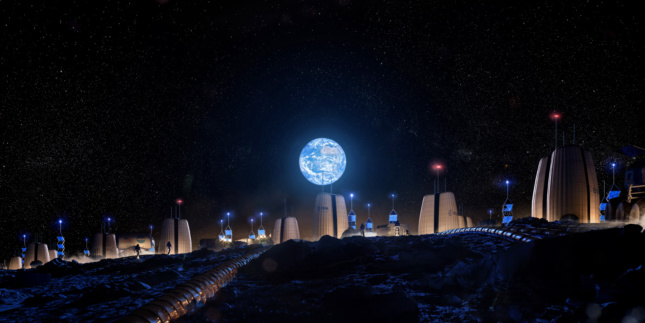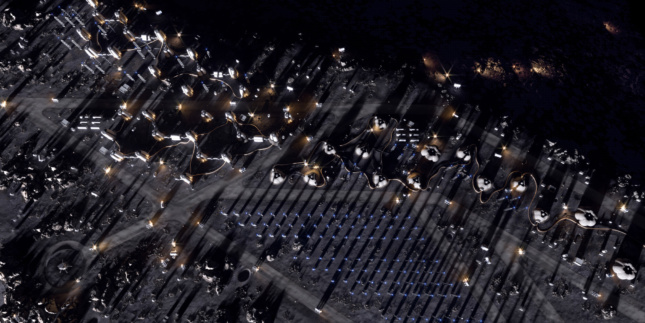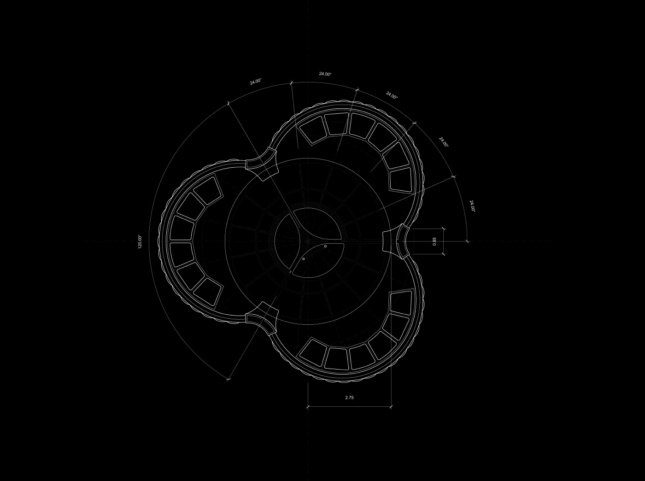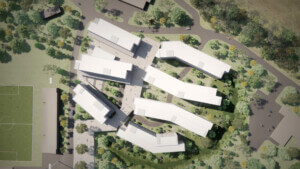While NASA is researching 3D-printed habitats for the Moon and Mars, the European Space Agency (ESA) has tapped Skidmore, Owings & Merrill (SOM) and the Massachusetts Institute of Technology (MIT) to envision a theoretical lunar city.
The Moon Village, which SOM will masterplan, design, and engineer, not only reflects the collaborative nature of the ESA’s mission but also lays out a plan—and base of operations—for space exploration past 2050.
As Israel prepares to potentially land the first privately-funded spacecraft on the Moon, the Moon Village would take a decidedly more multinational approach and could be used by future science missions or even space tourists.
Set up along the rim of the Shackleton crater on the Moon’s south pole, which receives continuous sunlight for nearly all of the lunar year, the Moon Village would rely on solar power to generate electricity. The possibility of water ice inside the crater itself, which is always shadowed, would provide the colony with another potential resource to tap.
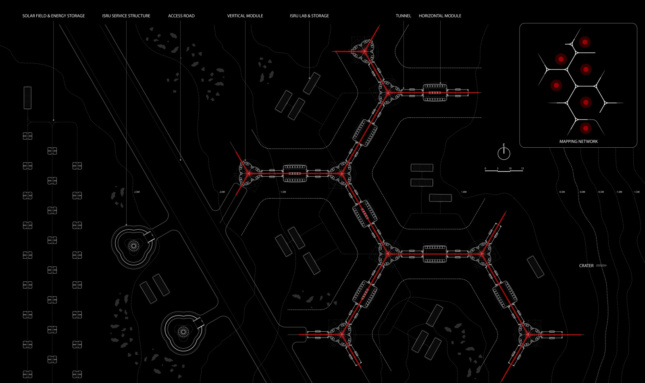
“The project presents a completely new challenge for the field of architectural design,” said SOM Design Partner Colin Koop. “The Moon Village must be able to sustain human life in an otherwise uninhabitable setting. We have to consider problems that no one would think about on Earth, like radiation protection, pressure differentials, and how to provide breathable air.”
How did SOM design around those tight constraints? The village’s modules would all inflate or deflate depending on their programmatic needs. Each structure would be about three-to-four stories tall and contain living quarters, environmental controls, life support systems, and workspaces. Eventually, 3D-printed regolith shells could protect the modules from radiation, fluctuations in temperature (although Shackleton crater has a more consistent temperature than other parts of the Moon), and dust. Modules would be clustered and linked through pressurized tunnels to provide easy transportation between them.
A series of in-situ resource utilization (ISRU) experiments could help determine how to best use the Moon’s natural resources. Oxygen and possibly rocket fuel could be generated from the nearby ice, and food could be conceivably grown in the environment.
The Moon Village has been envisioned as a three-stage development that would eventually create a long-term, sustainable Moon community. The first phase, the master plan revealed on April 9, used near-future technology; but, as Fast Company pointed out, the Moon Village would still be reliant on international cooperation, and that’s far from assured right now.






